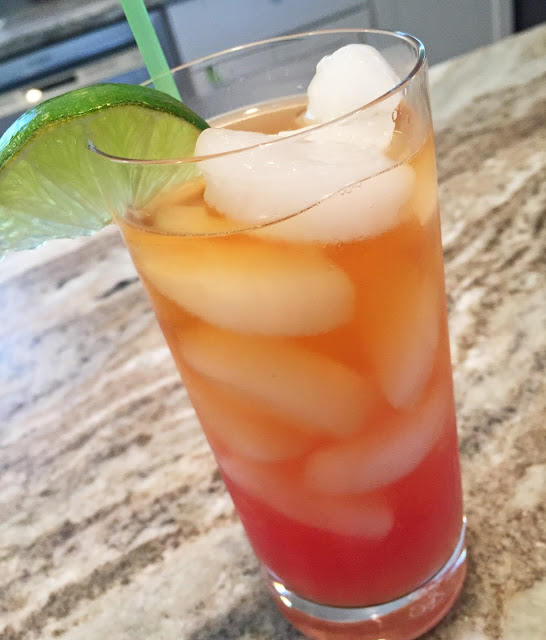 |
| Mt Gay rum, Bacardi light rum, a splash of cranberry, splash of OJ, splash of coconut water, lime juice. Light and tropical! |
So I used a cocktail for my analogy (because it’s more appealing in a photo than a burger), but the original article referenced a hamburger.
The writer attended a presentation where the subject of allocation of assets in real estate was discussed.
When I read the piece, it made perfect sense to me, but I thought I’d try and further explain and simplify the topic.
The writer mentioned that while most people see a hamburger, he sees a beef patty, a bun, lettuce, tomato and cheese. The components that make up a good burger. “He doesn’t see a single piece of real estate, but numerous smaller assets that comprise the larger asset. The same can be said of a purchase price allocation (PPA).” So my analogy represents the layers and components that make up the finished cocktail.
What does this really mean?
When a business sale takes place (keep in mind, a B&B is a business within a piece of real estate), the purchase price has to be allocated among assets: land, building, FF&E (furniture, fixtures & equipment) and sometimes goodwill and non-competition agreement. The seller has been filing a corporate/business tax return using a certain basis from when they purchased, and depreciating against such basis over the years of ownership. When the property does transfer, the seller’s taxable gain (or sometimes loss) is calculated on that basis. But the buyer and seller have to agree on an ‘allocation of assets’, since it affects the seller’s gain and becomes the buyer’s tax basis for future depreciation. Are you snoozing yet?
Here’s an example:
Most Beautiful Inn B&B
Contract Price $1,000,000 broken down as such:
Land: $200,000 (tangible property/real estate)
Building: $650,000 (tangible property/real estate)
FF&E: $50,000 (tangible personal property)
Goodwill: $75,000 (intangible asset)
Non-Compete: $25,000 (intangible asset)
Total $1,000,000 contract price
And let’s say this represents the allocation the seller (then buyer) agreed to as their tax basis when they purchased:
Land: $100,000 (tangible property/real estate)
Building: $450,000 (tangible property/real estate)
FF&E: $30,000 (tangible personal property)
Goodwill: $35,000 (intangible asset)
Non-Compete: $15,000 (intangible asset)
Total $630,000 (what they paid)
So what does this mean? Because land doesn’t depreciate, and the building and FF&E depreciate at different rates, the gain when a sale takes place is calculated on the new allocation as it compares with the old, factoring in depreciation. The seller pays a tax on the gain. Further, the state of Maine has a one time state transfer tax (when a property is sold) that is paid at closing; it is calculated on the amount allocated to land and building only (real estate). The FF&E, though tangible assets, are taxed separately by personal property taxes. And the parties have to sign an IRS document that they agree to the allocation, so that they are held accountable should they decide to do any crazy accounting!
So as a seller, you will want to consider how a sale will affect you financially. Seek your accountant’s advice on anticipating your gain. A lot more goes into this calculation than I’m describing here, but it’s enough to help you understand the basics to talk to your accountant about. And as a buyer, you can talk to your accountant about how your sale down the road might be affected by the agreed upon allocation.
I have to smile. My father is an accountant and when I was young and would visit his office, I’d say “I could never be an accountant or crunch numbers like you do, Dad”…What is it that they say? Never say never?
